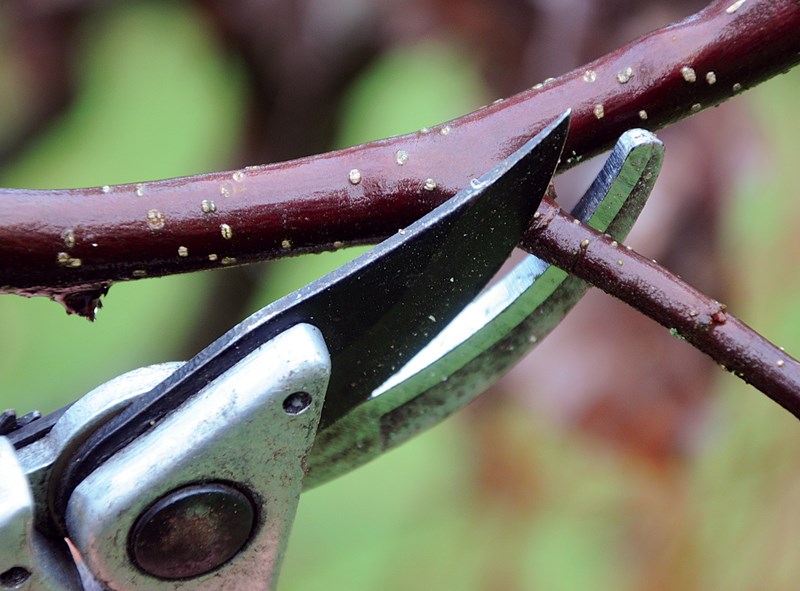Although we saw another light dusting on Monday, most of the snow on the North Shore has melted by now.
I drove through Kelowna last month, and it was amazing to see so much fruit tree pruning happening in the orchards despite snowdrifts and cold temperatures.
I suspect that these commercial orchards prune early because there is so much to do and Kelowna’s climate is much drier than the North Shore’s.
I was taught not to prune fruit trees too early in January or February because our weather tends to be wet and this increases the risk of disease spreading at the fresh cut points on the branches. Typically the end of February and early March offer a nice time to do fruit tree pruning while the tree is still dormant; look for a few dry, sunny days in the weather forecast and then get out your secateurs.
Always start your pruning with the three Ds: dead, diseased, and damaged.
If you are dealing with a diseased tree sterilize your tools between cuts to reduce the spread. Dipping tools in a small jar of rubbing alcohol will do the trick.
After I’ve taken care of the three Ds I move on to removing the watersprouts. These are small branches sticking straight up into the air off established branches.
Next you can thin out the branches to increase the amount of sunlight the tree’s leaves will be exposed to. Remove any branches that grow downward, cross over other branches, or grow towards the centre of the tree. The goal is to have a tree that has evenly spaced branches that splay out from the trunk. Frequently step back from your tree and carefully consider the cuts you are making and the result that they will have on the whole. Are there areas where many branches are bunched up?
This may be a good area to thin out by taking out a branch. Make sure that all of your cuts are clean (no tearing) and flush to the branch. These steps will give you a good start on fruit tree pruning, but if you have an old tree that has been neglected for many years it may be prudent to hire a professional arborist that specializes in fruit trees.
March is also a great month to start seeds. If you’re growing onions, get those seeded in flats inside your house as soon as possible. They require a lot of time to get going and the long days of summer to form nice big bulbs. Depending on the temperatures in your garden you may also be able to start planting hardy greens outdoors: spinach, kale, tatsoi, and more.
Early March is also a good time to start your tomato seedlings indoors; most people aim to start them six weeks before our last frost date (March 28), but tomatoes really don’t like to be outside while soil temperatures are cold.
I would say it is possible to grow tomatoes successfully even if you get seedlings into the ground by mid April.
With our short West Coast summers, try to choose “early” varieties of tomatoes or cherry tomato varieties. It can be hard to get enough heat for the heirloom beefsteak varieties to produce well on the North Shore especially if you are not using a hoop house or greenhouse.
Saint Patrick’s Day is potato-planting day in my books! Place your seed potatoes on a bright, cool windowsill to encourage them to develop sturdy little buds about a week before you plant.
This will kickstart potato growth and ensure an abundant and early crop. For early-season varieties, like Warba, it is a good idea to select the four strongest buds on each seed potato, and rub off all the others. Seed potatoes should be the size of a large ice cube. Plant them whole or cut them to this size with at least one bud per piece.
Emily Jubenvill grew up on the North Shore and is passionate about growing fresh, organic food. She’s starting an organic farm, and working for the North Shore Neighbourhood House’s Edible Garden Project. Contact: [email protected] or ediblegardenproject.com.



